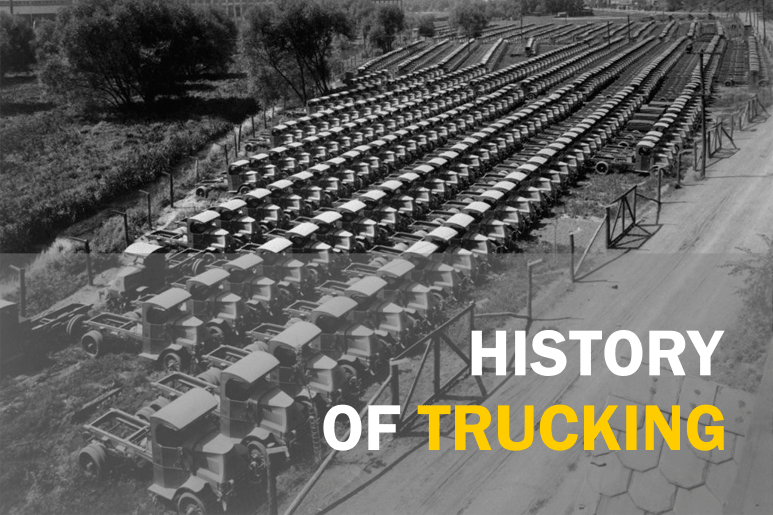The ability to transport goods safely and efficiently across long distances is foundational to economic life in modern societies.
The reason for the nowadays success of the trucking industry is the progression of the technology and engineering ventures throughout the years.
Trucking Timeline
19th century
In the beginning of the century, transportation systems helped connect the growing nation. The travelling was primarily by horse or on the rivers, and then canals and railroads. Most roads were dreadful and they mostly served the local needs.
Trains were more efficient for transporting freight, but they could only distribute to more populated urban areas. Trains were a heavy-duty, fast, year-round transport solution, and in time they became the preferred option for commercial shipping. The goods from the rail-stations were distributed in carts and wagons.
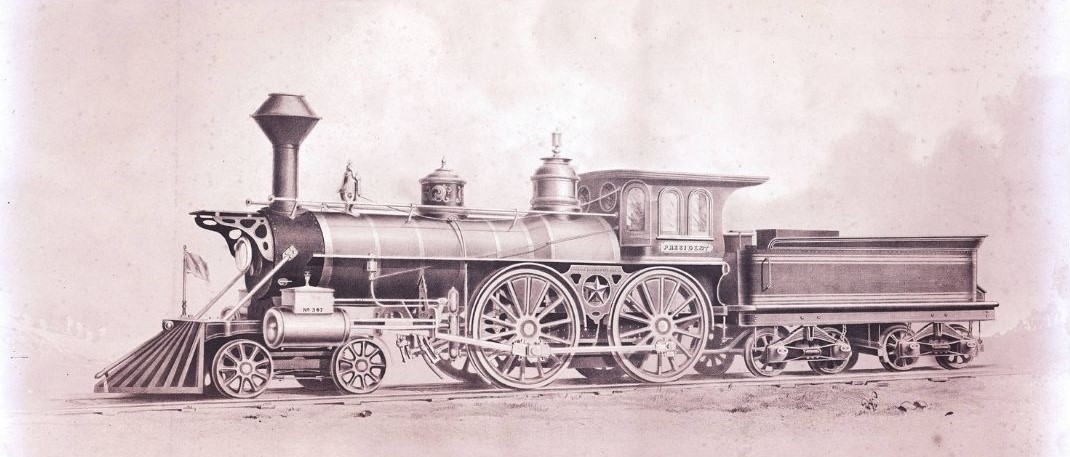
In 1896, Gottlieb Daimler designed and built the first motorized truck.
This engineering marvel operated in two forward speeds and one reverse, and it was all powered by a belt-driven four horsepower engine.
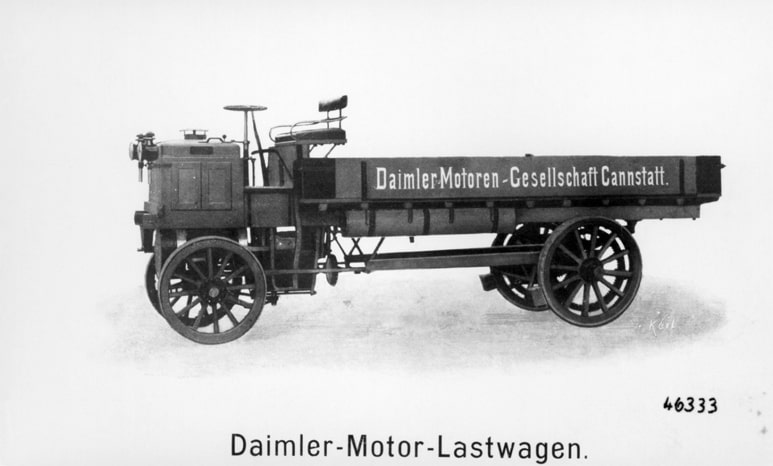
In 1899, the Winton Motor Carriage Company developed the first trailer truck model, which converted a car into a tractor by attaching a small trailer.
These haulers closely resembled its horse-drawn wagon predecessor, but the driver sat in front of the mechanized motor; a cart was attached to the back.
These carts were a simpler form of the “flat-bed trailer” you know today – a platform on wheels used to move freight.
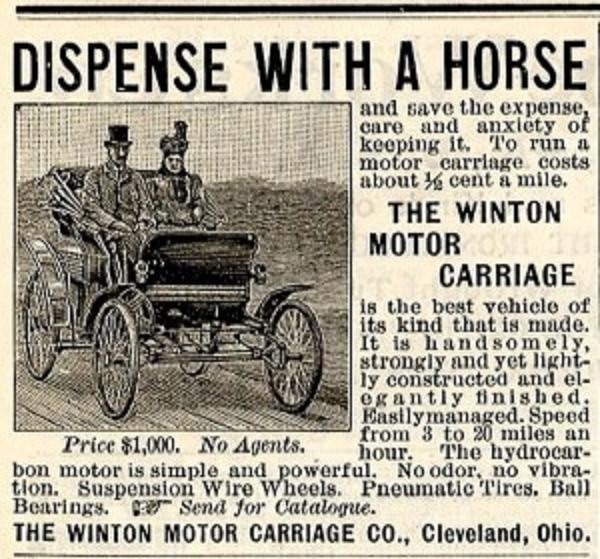
20th century
With the improvement of infrastructure and development of a number of technologies gave rise to the modern trucking industry. Trucks gained their popularity after installing the gasoline-powered internal combustion engines, gear drives, tractor/semi-trailer combination and change in transmissions.
In 1900 Jack and Gus Mack founded Mack Trucks in Brooklyn, New York. This company became the standard holder of the American trucking industry.
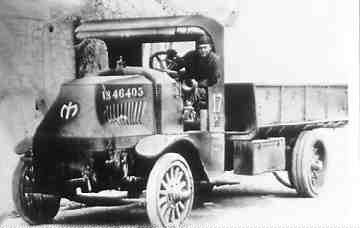
In 1901, truckers were underpaid and underappreciated. They frequently worked 12 to 18 hours a day, usually seven days a week, for $2 a day. Companies also held them liable if products were lost or damaged.
In response, truckers formed the Team Drivers International Union (TDIU) to secure better wage and working conditions. A year later, the Teamsters National Union formed from members who broke away from the TDIU. However, they decided their requests would be more successful if they worked together.
In 1903, they merged into the powerful International Brotherhood of Teamsters (IBT).
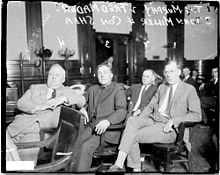
In 1904 there were 700 trucks motoring around the US. The tires at that time were made of solid rubber making an uncomfortable, slow and bumpy ride. The goods were often delivered damaged.
Robert William Thomson invented the actual first vulcanized rubber pneumatic (inflatable) tire. Thomson patented his pneumatic tire in 1845. The new design of an air-filled tire as a replacement of solid rubber was accredited to John Dunlop, but now is generally accepted that he actually “reinvented” it in the 1880s with Robert Thomson bringing for the original design.

In 1912, lights were added to the trucks which meant that drivers could move goods also at night time.
In 1912, a five-man crew of Teamster drivers from the Charles W. Young Company of Philadelphia departed with three tons of Parrot brand olive oil soap bound for Petaluma, Calif.
With virtually no maintained roads and a complete deficiency of creature comforts, the crew arrived at City Hall in San Francisco in a record 91 days.
As the first transcontinental delivery, the dangerous journey fascinated the nation and started a new chapter in the story of American industry. The period of over-the-road trucking had begun.
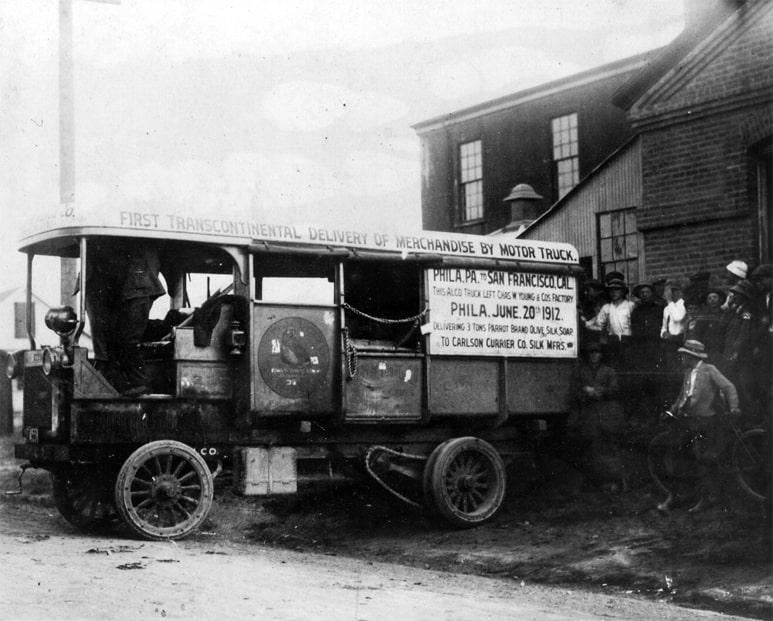
In 1913, states introduced weight limits for trucks ranging from 18,000 pounds (8,200 kg) in Maine to 28,000 pounds (13,000 kg) in Massachusetts. Gravel-surfaced roads were protected from damage caused by the steel and solid rubber wheels of the early heavy trucks after the laws were passed.
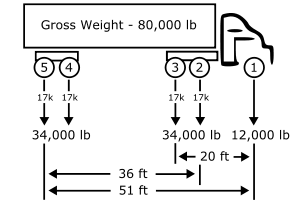
By 1914, there were nearly 25,000 trucks. August Charles Fruehauf built the first semi-trailer at this year. A wealthy lumber merchant wanted to move his boat around so he requested Fruehauf to make him a semi-trailer. Because he successfully achieved his desired result, the merchant asked for more trailers which lead to the development of the Fruehauf Trailer Company in 1918.
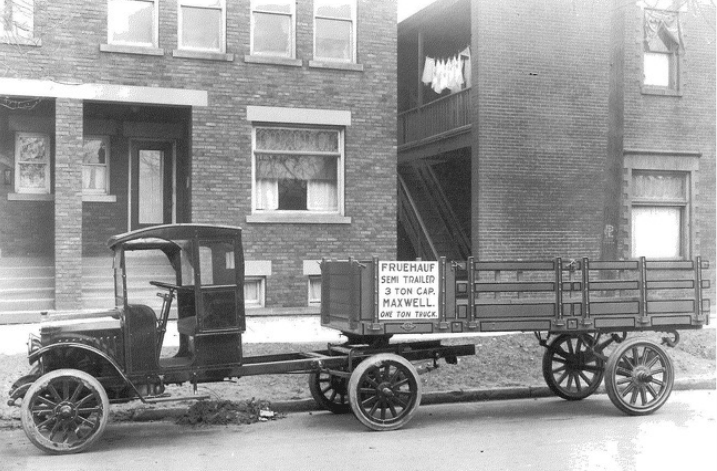
– World War I
During the years 1914–18 encouraged rising of the truck use and development. At this time trucks were mostly used by the military. The Class-B Standardized Military Truck or “Liberty Truck” was a Heavy duty truck produced by the United States Army during World War I. With a top speed of 15 miles per hour, it represented a huge leap forward in military trucks and helped standardize the types of vehicles used by the army.

Two truck manufacturers emerged during this time were a former sewing machine makers, White Motor Company and Mack Brothers Company.
Hermann Farr in 1915 patterned the fifth wheel, making it faster to pick up and drop off trailers. Charles H. Martin was able to take advantage of on Herman Farr’s invention of the 5th wheel.
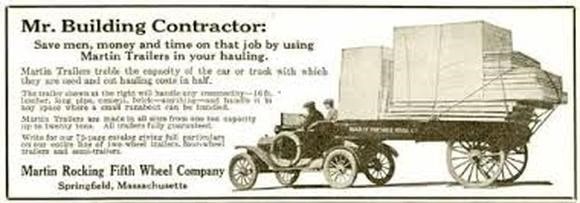
In 1916, the Seattle Chamber of Commerce sponsored a truck to travel to New York City; it took 31 days. This trip showed that truck transport is going to be major influence in the economy.
In 1920 the diesel engine was introduced. Diesel engines have exceptional fuel efficiency compared to gasoline engines. At the time, the improved fuel efficiency helped expand the range of trucks. The standardization of truck and trailer sizes also came with power assisted brakes and steering.
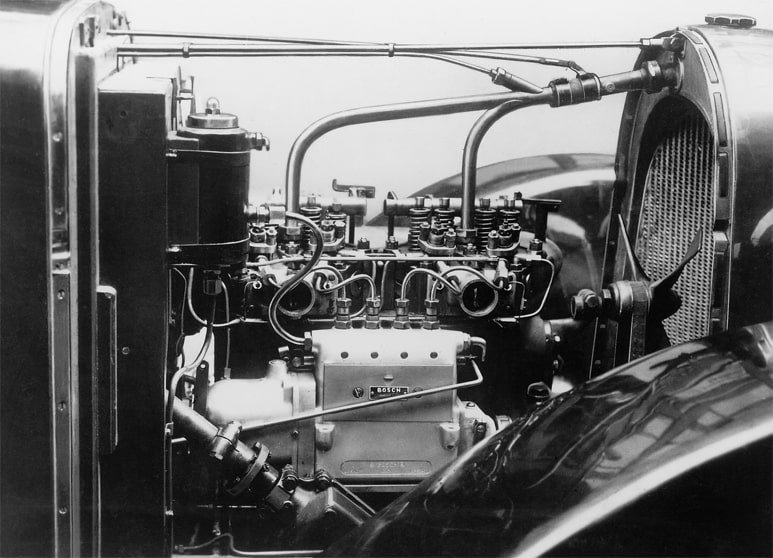
The 1930s saw 329,000 long-haul trucks registered in the U.S. At this time there was also a progress with the semi trailer. They were better adapted for heavier loads.
In the spring of 1933 the American Highway Freight Association and the The Federated Trucking Associations of America met to speak for the trucking association and begin discussing a code. By summer of 1933 the code of competition was completed and ready for approval. The two organizations had also merged to form the American Trucking Associations. The code was approved on February 10, 1934. On May 21, 1934 the first president of the ATA, Ted Rogers, became the first truck operator to sign the code. A special “Blue Eagle“ license plate was created for truck operators to indicate compliance with the code.
In 1935, congress passed the Motor Carrier Act, which replaced the code of competition and authorized the Interstate Commerce Commission (ICC) to regulate the trucking industry. The Motor Carrier Act of 1935 required new truckers to seek a “certificate of public convenience and necessity” from the ICC.
In 1939 Frederick Jones created the technology for portable cooling units. The refrigerated unit initially sat underneath trucks, but was moved to the top when they discovered it clogged from road dirt.
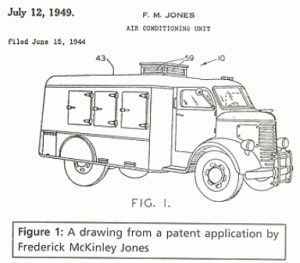
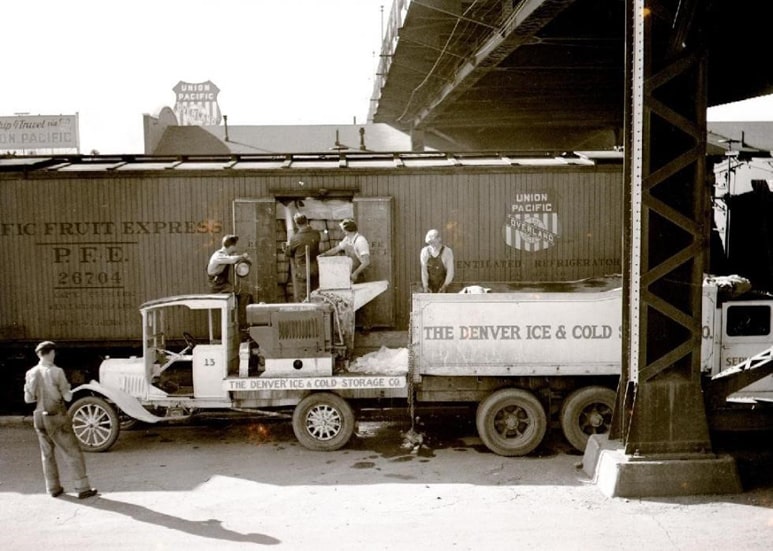
– World War II
When America entered World War II (1941), Teamsters became the driving force in America’s military campaign.
The Red Ball Express was a famed truck convoy system that supplied American units in the race across France. It was named after the red dots commonly used to indicate priority express trains in the United States. The convoy system went into action on August 21, 1944, with more than 6,000 trucks. Seventy-five percent of Red Ball Express drivers were African American.
The trucks drove on one way roads reserved completely for their convoys. Military policemen watched over the intersections to guarantee the trucks did not have to stop.
They delivered an estimated 12,000 tons of supplies per day for 82 days. By the end of November, when the Red Ball Express was discontinued, its drivers had transported more than 412,000 tons of fuel, ammunition, and equipment to 28 different divisions.
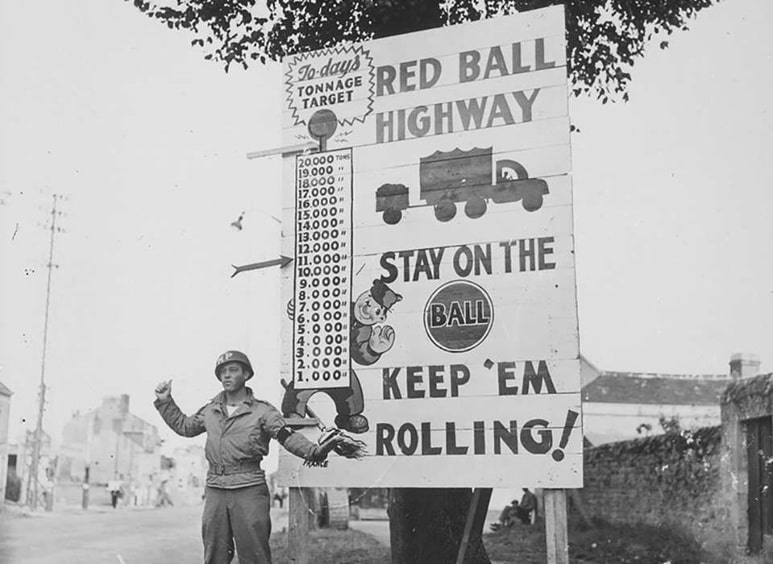
In 1941, President Roosevelt appointed a special committee to explore the idea of a “national inter-regional highway” system. The committee’s report, Interregional Highways, released on January 14, 1943, recommended constructing a 40,000 miles (64,000 km) interstate highway system. The financial exigencies and material shortages of World War II would not permit construction of an interstate highway system, so post-war planning was at the top of the agenda.
The Interstate System has been called the Greatest Public Works Project in History. President Dwight D. Eisenhower signed the Federal-Aid Highway Act of 1956 and authorized the construction of the 41,000-mile Interstate Highway System.
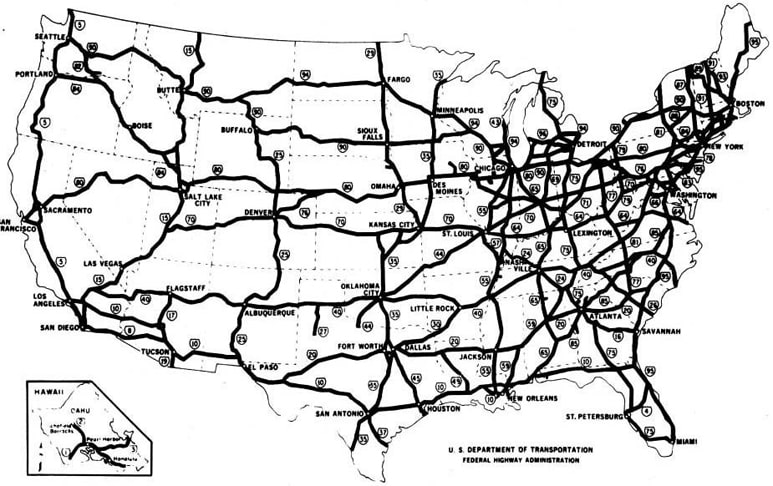
He first took part in the Motor Transport Corps convoy that drove 3,251 miles (5,232 km) between Washington D.C. and Oakland California. It took them 62 days to complete.
The convoy was to test the mobility of the military during wartime conditions.
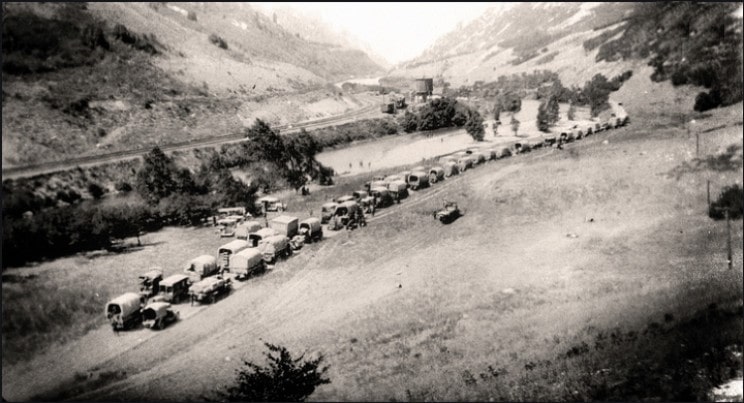
On first-hand Eisenhower learned of the difficulties faced in traveling great distances. These early experiences influenced on the decision to create an interconnected network of freeway which will allow larger trucks to travel at higher speeds through rural an urban areas.
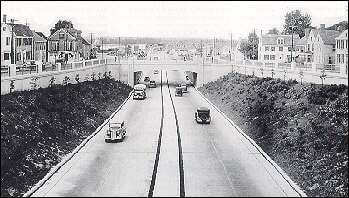
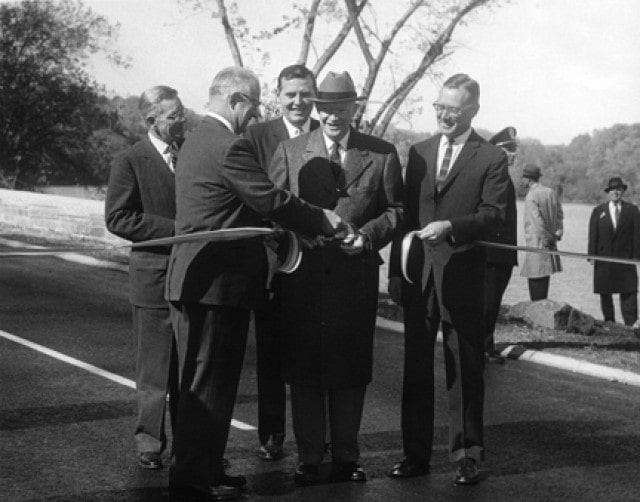
In 1945 Al Gross invents the CB radio and walkie-talkie. Almost every trucker had one and they used it to inform each other about police activity, to give directions, to ask about nearby gas stations and weigh stations, and just to network, chat, and pass the long, lonely hours.
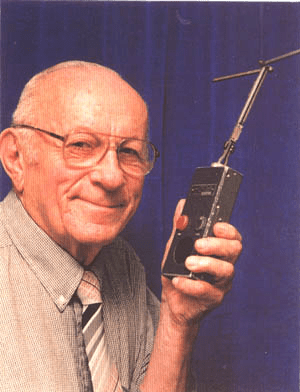
In 1959 Volvo invented the seat-belt.
The three point seat belt is one of the most important and significant safety innovations in the history of the world.
It has saved more than 1 million lives, many of them truckers.
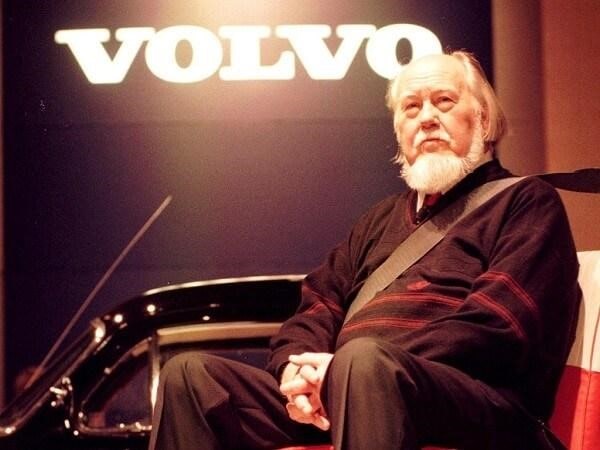
In 1964 the American Association of State Highway and Transportation Officials (AASHTO) conducted a series of wide-ranging field tests of roads and bridges to determine how traffic contributed to the weakening of pavement materials. These tests led to a recommendation that the gross weight limit for trucks should be determined by a bridge formula table based on axle lengths, instead of a static upper limit.
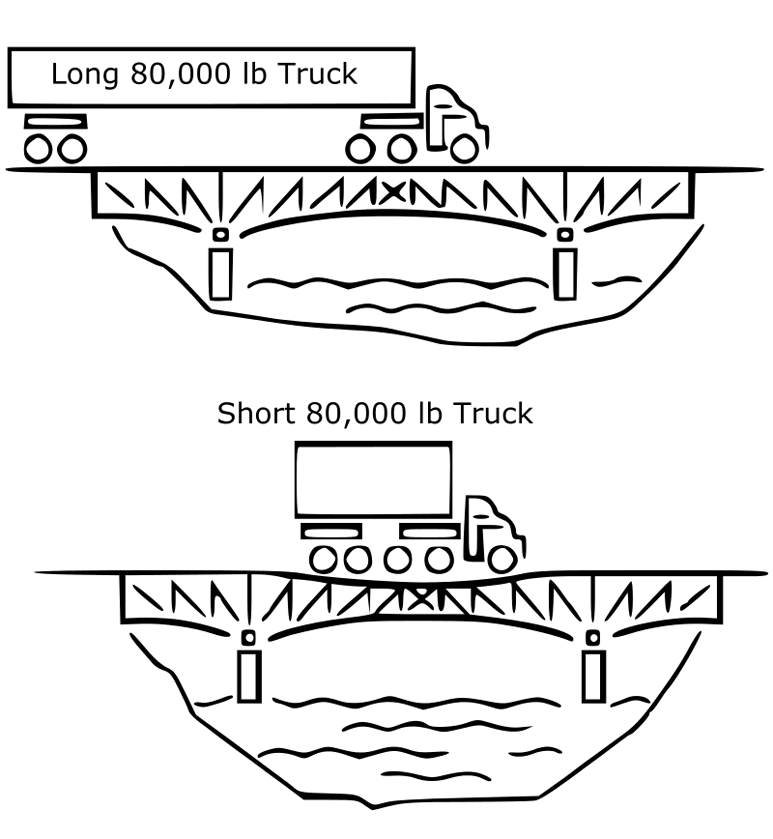
In 1967 the Department of Transportation (DOT) was created. The department’s mission is “to develop and coordinate policies that will provide an efficient and economical national transportation system, with due regard for need, the environment, and the national defense.”
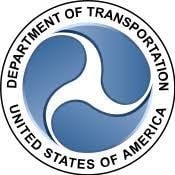
The 1970s were the years where trucking achieved national attention through pop culture in film with Smokey and the Bandit (1977), Breaker! Breaker! (1977), and Convoy (1978), and songs like Eddie Rabbit’s “Driving My Life Away” (1980) and Alabama’s “Roll On 18-Wheeler (1984).
Related reading: 12 Great Trucking Movies You Should Definitely Watch
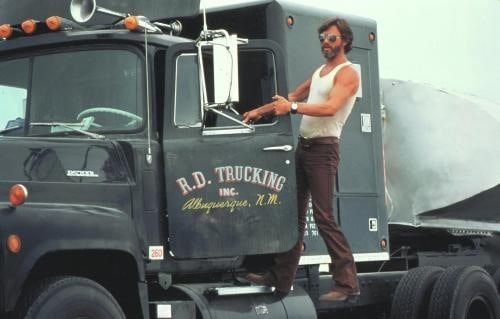
In 1974 President Richard Nixon signed a bill that mandated a national 55 mph speed limit across all 50 states.
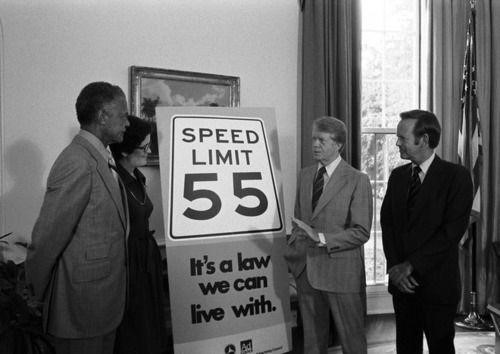
In 1975 at the intersection of Horizon Boulevard and Interstate 10, the first truck stop (Petro truck stop) was built.
It offered snacks, coffee, and other comforts and it was made as self-service truck stop.
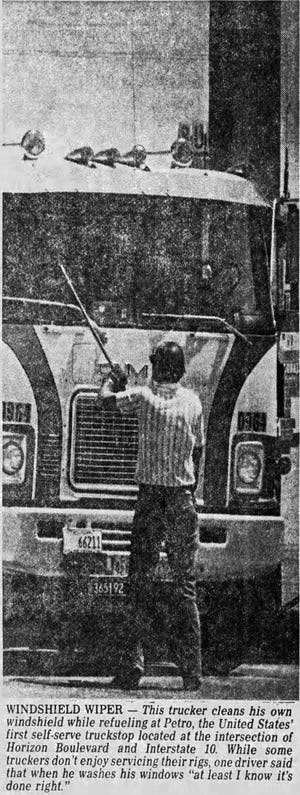
1980 was the year where the Motor Carrier Act deregulated the trucking industry. The objective of the act was to remove government restrictions and red tape in the trucking industry meaning reduce unnecessary regulations by the Federal government. This has forced companies to consider other options and innovate to beat the competition. Companies were forced to keep a lower profit margin in order to be competitive.
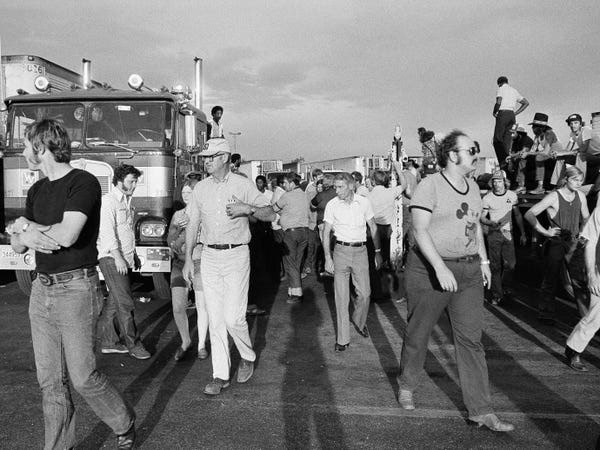
Lower salaries were often paid to truckers after the deregulation. Before deregulation, many tuckers belonged to Unions and were paid an estimated 50% more than other comparable occupations. After deregulation, about 28% of truckers belonged to a union.
In 1981, the maximum gross weight limit of 80,000 on interstate highways was adopted by all the states.
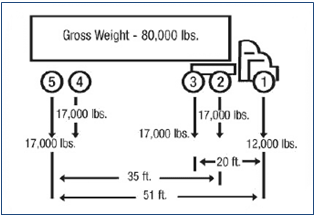
In 1998 the first National Truck Driver Appreciation Week was celebrated. This event has brought to highlight the work of truckers throughout the country.
21st century
The trucking industry has developed greatly since its humble beginnings of freight transportation in the early 20th century.
Improvements were made in fields such as technology, automation, and load capacity.
January 1 2000 the Federal Motor Carrier Safety Administration (FMCSA) was established. Their mission was improving the safety of commercial motor vehicles (CMV) and truck drivers through enactment and enforcement of safety regulations.
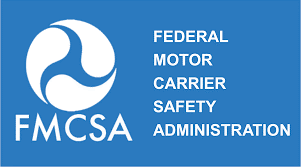
In 2005, the FMCSA issued the first major change to the HOS rules since 1939 requiring drivers take 10 off-duty hours (including 8 hours of rest).
By 2006 there were over 26 million trucks on America’s roads.
In 2007 with the Transformers movie, the trucking industry gained back its popularity. The semi-trailer truck leader of the Autobots in the “Transformers” films is called Optimus Prime, a Western Star custom-built for the movie.
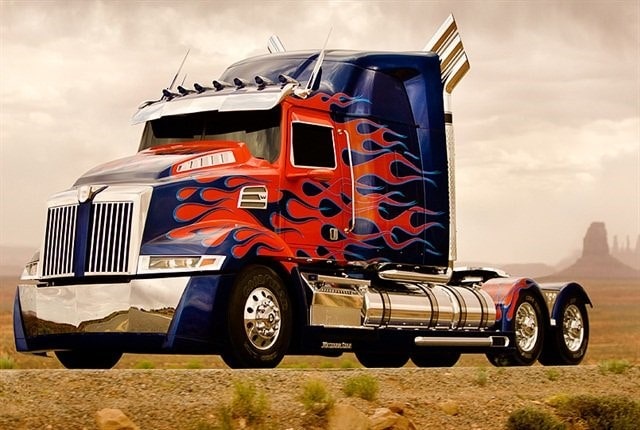
In 2015 the FMCSA published the electronic logging device (ELD) mandate.
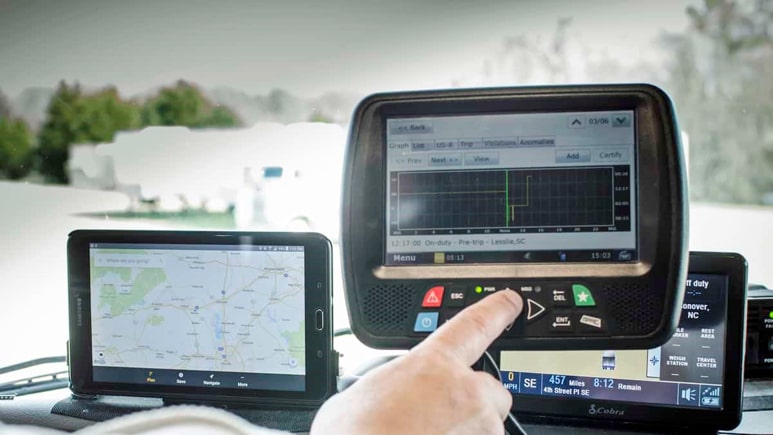
In 2021, there are a lot of advantages for being a truck driver. It takes a shorter time to take lessons for truck driving and opportunities for online training.
This leads to faster recruiting process and starting a job. The classic trucking days where maps were used to find places, radios were the only devices music was broadcasted and fast food was the only choice to eat, are no longer here.
Now drivers have advanced GPS technologies, unlimited options of entertainment during the drive, many truck stops that offer unlimited food options, showers and place to rest.
Today, there’s an estimated 15.5 million trucks on the road and over a million trucking companies in the U.S. alone. The trucking industry employs approximately 8.9 million people, 3.5 million of which are truckers.
Nearly 70% of all freight is moved by truck.
Further reading: 15 Trucking Facts [Infographic]
The industry is still growing and necessary to transport freight around the world.



